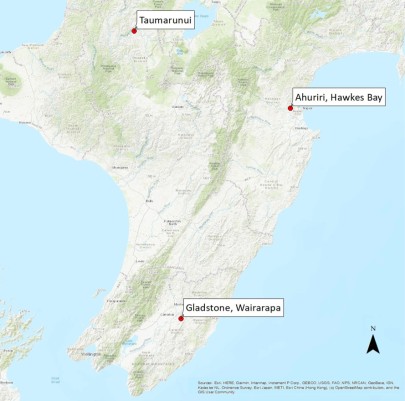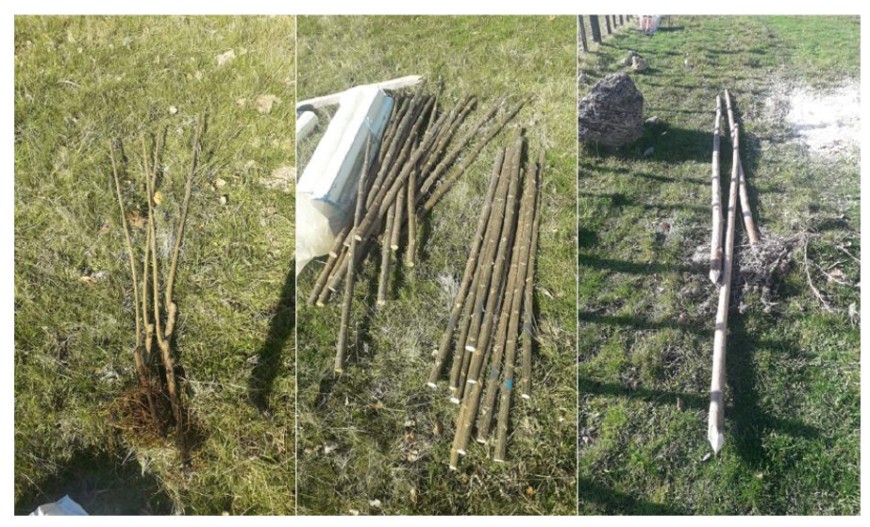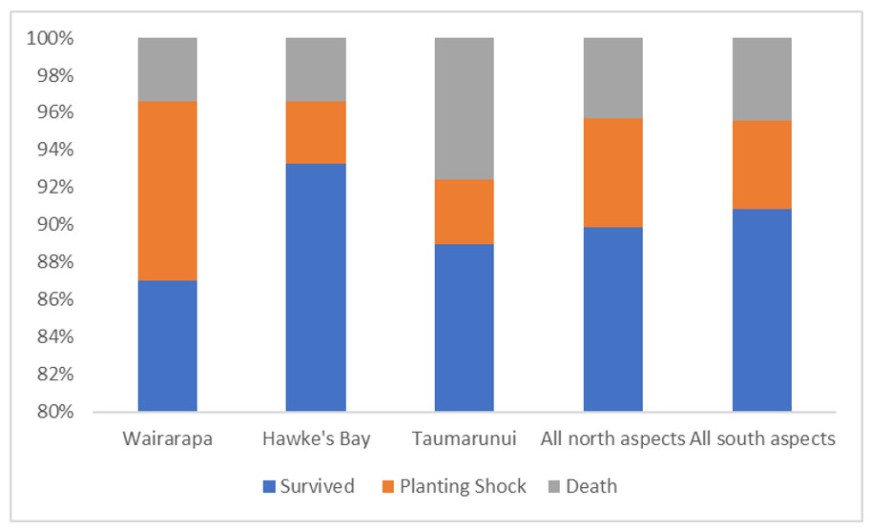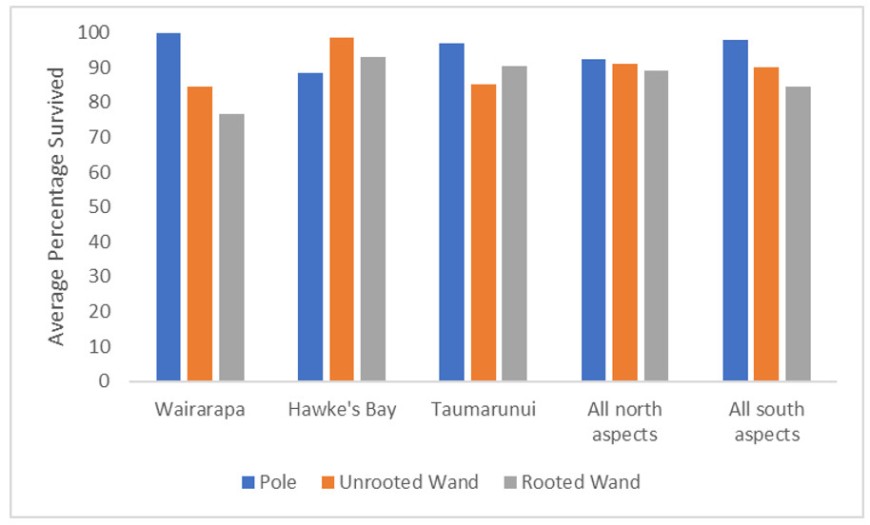- Home
- ...
- Smarter Targeting of Erosion Control (STEC)
- Smarter Targeting of Erosion Control (STEC) News
Environmental factors influencing the survival of poplar material planted for erosion control on hill-country farms in New Zealand

Figure 1. North Island map showing the three trial sites .
In her MSc thesis at Massey University Ebony Davison explored these issues. Her research involved a set of interviews that captured the current knowledge and views about tree planting and survival within a cross-section of New Zealand’s North Island regional and district councils and scientists. The interviews revealed a consensus on the importance of trees in erosion mitigation, but mixed views regarding the importance of certain survival variables (e.g. where on the stems the poles are cut, duration of time between harvest and planting, and wind exposure). These differences probably reflect the different regional climate conditions and practitioner experience.
To enrich the quantitative data on tree survival in New Zealand hill country, a poplar planting trial was performed on three hill-country farms in the North Island (Figure 1). With climate considered to be one of the most important factors affecting survival, the trial tested the impact of different climatic conditions on plant survival over one planting season. Data from on-site climate stations and nearby NIWA (CliFlo) climate monitoring stations were used to analyse rainfall, temperature, and solar radiation. The trial also tested the impact of those morphometric variables (e.g. slope aspect, profile curvature, slope gradient, and topographic position index) that are considered to affect the microclimate and soil conditions. At each farm a north- and a south-facing slope susceptible to landslide erosion was selected and planted with 90 trees, made up of three plant types; 30 3-metre poplar poles planted using a pole driver, and 30 unrooted and 30 rooted poplar wands planted using a spade (Figure 2).

Figure 2. Plant types used in the trial: rooted wands (left), unrooted wands (middle), and 3-metre poles (right).
Survival was determined by the absence of leaves or shoots, or if the poplar material was broken (knocked over by cattle, etc.) or missing. If trees did not survive between planting and the first measurement visit (i.e. no visible signs of shoot growth) the death was assumed to be attributed to planting shock.
Overall survival across all three plant types (poles, unrooted wands, rooted wands) at all trial sites combined was high (90.4%) (Figures 3 and 4). The highest survival across all plant types occurred at the Hawke’s Bay site (93%) and the lowest occurred at the Taumarunui site (89%). South-facing aspects had slightly higher survival than north-facing aspects (90% and 89%, respectively).
The Wairarapa had no pole deaths, which was attributed to experienced pole-planting contractors, but the lowest rooted wand survival (76.5%). The Hawke’s Bay site had the highest unrooted wand (98.5%) and rooted wand survival (93%). South-facing aspects had higher pole survival (98%) than north-facing aspects (92.3%), but lower unrooted and rooted wand survival (90% and 84.3%, respectively) than north-facing slopes (91% and 89%, respectively).
Of all the poplar material planted, 5.3% was lost to planting shock. The Wairarapa trial site had the most losses from planting shock (11%), and Taumarunui and Hawke’s Bay had similar losses (3.8% and 3.6%, respectively).

Figure 3. Percentage of survival, planting shock losses, and death across the three trial sites and all north- and south-facing trees combined.

Figure 4. Average percentage survival for poles, and unrooted and rooted wands, across the tree trial sites and all north-facing and south-facing trees.
The results suggest there was no significant relationship between poplar deaths and morphometric or climatic variables. However, there was a statistically significant difference in growth rates between the north- and south-facing aspects, suggesting that microclimate may affect long-term survival. It was concluded that higher rainfall throughout the trial period potentially contributed to higher survival. This suggested that in years of higher rainfall (e.g. the East Coast during La Niña phases of the El Niño Southern Oscillation and positive Southern Annular Mode), targeting planting in areas of higher non-survival risk should be completed to increase survival rates. Further research under more typical seasonal conditions is necessary to fully explore the morphometric and climate variable impacts.
This research captured the opinions and knowledge of experienced industry practitioners, and it highlights the importance of several aligned variables that influence survival. It has provided a valuable systematic analysis of the cause of death of newly planted poplars, and quantitatively assessed early establishment growth. These findings will be valuable to regional council planners, land management advisors and farmers, and will potentially lead to more positive planting and reduced soil erosion outcomes for New Zealand hill country.
